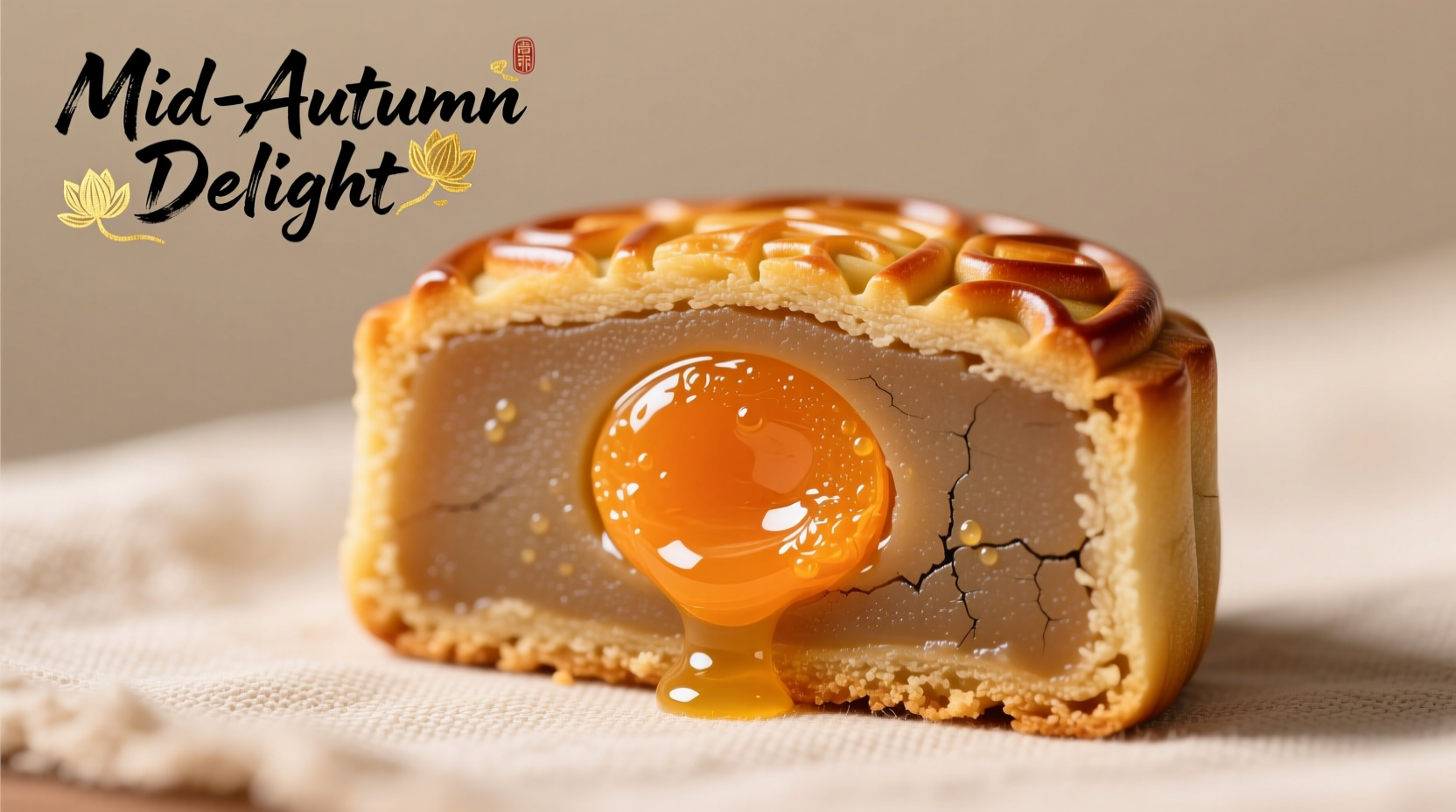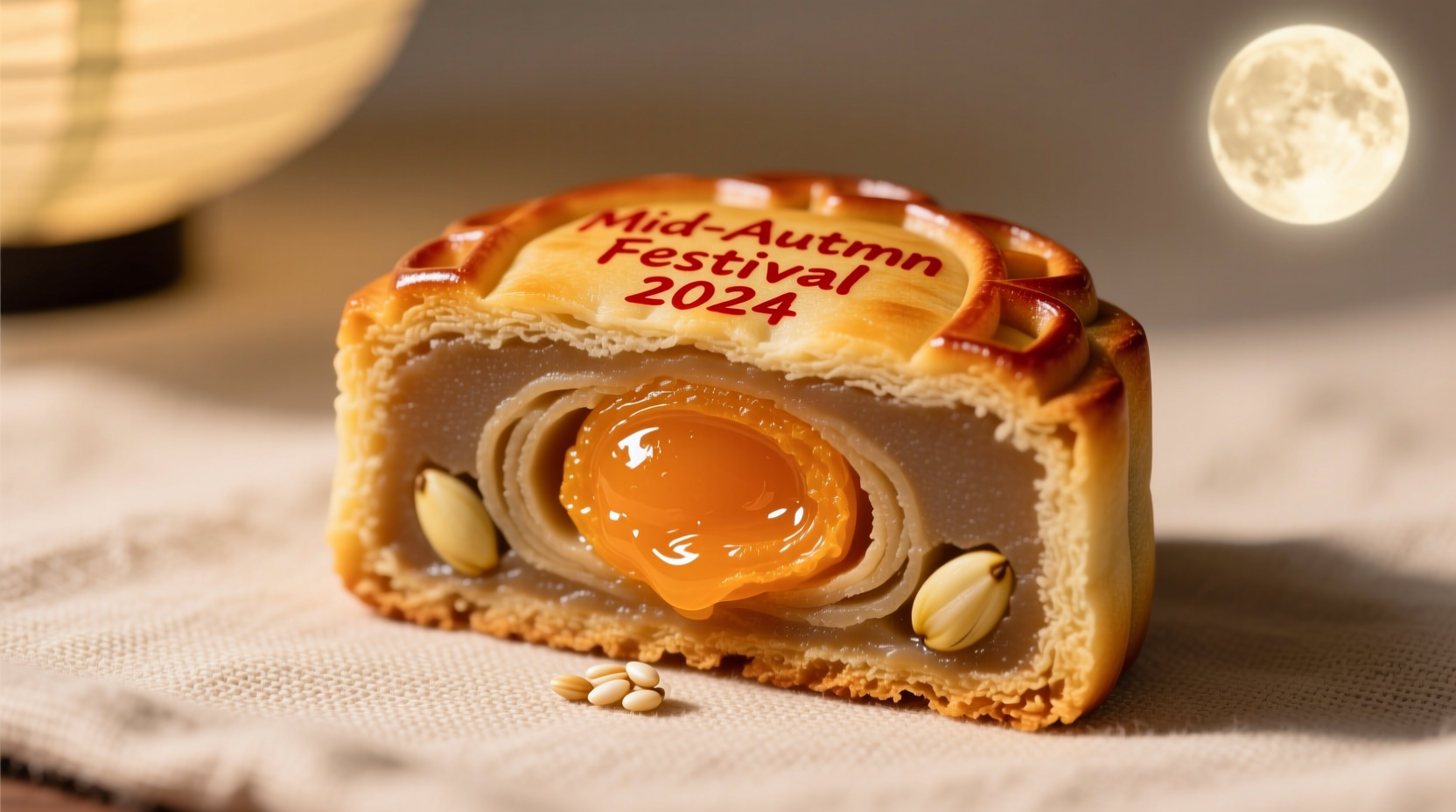If you've ever wondered what mooncakes taste like before trying one, you're not alone. These iconic pastries from Chinese culture have gained global popularity, yet their unique flavor profile remains unfamiliar to many. As a chef specializing in Chinese regional cuisines, I've spent decades working with traditional mooncake recipes and their modern interpretations. Let's explore exactly what to expect when you take that first bite.
Understanding Mooncake Flavor Components
Mooncakes aren't a single-flavor experience but rather a carefully balanced composition of elements that work together. The taste experience unfolds in layers as you eat, beginning with the outer pastry and moving through the filling to the often-surprising center.
Traditional Mooncake Taste Profile
The classic Cantonese-style mooncake—still the most widely recognized version globally—features several distinctive elements:
- Pastry shell: Slightly sweet, tender, and dense with a texture similar to shortbread but more substantial
- Lotus seed paste filling: Smooth, mildly sweet with subtle floral notes and a velvety texture
- Salted egg yolk center: Rich, savory, and slightly creamy with a briny quality that cuts through the sweetness
This combination creates what Chinese culinary tradition calls "harmonious contrast"—the sweet paste balanced by the salty yolk, the dense pastry offset by the smooth filling. The overall impression is rich but not cloying when properly made, with flavors that develop as you eat.

Mooncake Flavor Evolution Timeline
Mooncake flavors have evolved significantly over centuries, adapting to changing tastes while maintaining cultural significance:
- Tang Dynasty (618-907): Simple wheat-based cakes with minimal filling, primarily symbolic
- Ming Dynasty (1368-1644): Introduction of lotus seed and red bean pastes as primary fillings
- Early 20th century: Salted egg yolk incorporated as a symbolic "moon" element
- 1980s-1990s: Regional variations emerge across Asia with local ingredients
- 2000s-present: Modern innovations including ice cream, snow skin, and international flavor profiles
Traditional vs. Modern Mooncake Flavor Comparison
| Characteristic | Traditional Mooncakes | Modern Variations |
|---|---|---|
| Sweetness level | Moderate (15-20% sugar) | Variable (some reduced-sugar options) |
| Primary fillings | Lotus seed paste, red bean paste, five kernel | Fruit flavors, chocolate, matcha, durian, ice cream |
| Pastry texture | Dense, slightly chewy | Softer, sometimes jelly-like (snow skin) |
| Serving temperature | Room temperature | Chilled (especially snow skin varieties) |
| Flavor balance | Sweet-savory contrast | Often purely sweet or fruit-forward |
Regional Mooncake Flavor Variations
While Cantonese-style mooncakes dominate international perception, regional variations offer dramatically different taste experiences:
Cantonese Mooncakes
The most widely recognized style features a golden-brown, dense pastry with lotus seed paste and salted egg yolk. The flavor profile is characterized by its sweet-savory balance, with the lotus paste providing floral sweetness and the egg yolk delivering a rich, salty counterpoint. When properly made, the sweetness is moderate—not overwhelming—allowing the nuanced flavors to shine through.
Suzhou Mooncakes
These feature a flaky, layered pastry more similar to puff pastry than the dense Cantonese version. Fillings tend to be sweeter, with prominent pork fat in savory versions. The texture is lighter, and the flavor profile leans more toward pure sweetness in sweet varieties or rich meatiness in savory versions.
Vietnamese Mooncakes (Bánh Trung Thu)
Often smaller with a translucent jelly-like skin, Vietnamese mooncakes frequently feature mung bean paste and may include ingredients like shredded pork or salted egg. The flavor profile tends to be less sweet than Chinese versions with more pronounced savory elements.
Modern Mooncake Flavor Innovations
Contemporary interpretations have expanded the mooncake flavor spectrum significantly:
Snow Skin Mooncakes
These refrigerated varieties feature a soft, glutinous rice flour exterior that's slightly chewy and cool to the touch. Fillings range from traditional lotus paste to modern interpretations like mango, durian, or even tiramisu. The flavor experience is lighter and fresher, with less emphasis on the sweet-savory contrast of traditional versions.
Ice Cream Mooncakes
Popularized by international chains, these feature ice cream centers encased in a thin chocolate or糯米 (glutinous rice) shell. The flavor profile is predominantly sweet and cold, with familiar ice cream flavors like green tea, chocolate, or fruit sorbet. These provide a completely different sensory experience from traditional mooncakes.
Texture: An Essential Component of Mooncake Flavor
Understanding what mooncakes taste like requires considering texture as much as flavor components. The mouthfeel significantly impacts the overall experience:
- Traditional pastry: Dense and slightly chewy, providing resistance that contrasts with the smooth filling
- Lotus paste: Silky smooth with a velvety consistency that melts in the mouth
- Salted egg yolk: Crumbly yet creamy texture with a slight resistance
- Snow skin: Soft, slightly elastic, and cool to the touch
The interplay between these textures creates a dynamic eating experience where each bite reveals new elements. This textural complexity is why many describe mooncakes as having a "multi-dimensional" flavor profile.
Contextual Considerations for Mooncake Flavor Experience
Certain mooncake flavors are traditionally associated with specific contexts that influence how they're perceived:
- Festival timing: Mooncakes eaten during the Mid-Autumn Festival carry cultural significance that enhances appreciation
- Pairing: Traditionally served with Chinese tea (like pu-erh or oolong) which cuts through richness and refreshes the palate
- Temperature: Traditional versions best at room temperature; snow skin varieties require refrigeration
- Portion size: Typically cut into small wedges to appreciate the rich flavors without overwhelming the palate
Tips for First-Time Mooncake Tasters
As someone who's introduced countless people to mooncakes, I recommend these approaches for the best first experience:
- Start with a small portion: Cut a traditional mooncake into 4-6 pieces to avoid flavor fatigue
- Pair with tea: A mild oolong or jasmine tea balances the richness effectively
- Let it breathe: Allow refrigerated mooncakes to sit at room temperature for 10-15 minutes before eating
- Try traditional first: Experience classic lotus paste with egg yolk before exploring modern variations
- Chew slowly: Allow flavors to develop in your mouth rather than swallowing quickly
Common Misconceptions About Mooncake Flavor
Several myths persist about mooncake taste that deserve clarification:
- "Mooncakes are extremely sweet": Traditional versions have moderate sweetness balanced by savory elements
- "All mooncakes contain egg yolks": Many modern and regional variations omit this element
- "Mooncakes taste artificial": High-quality versions use natural ingredients with nuanced flavors
- "Mooncakes are dry": Properly made versions have moist, velvety fillings that complement the pastry
Understanding what mooncakes taste like requires experiencing them beyond these common misconceptions. The best mooncakes offer a sophisticated balance of flavors and textures that reveal their complexity with each bite.
Frequently Asked Questions
What does a traditional lotus seed paste mooncake taste like?
Traditional lotus seed paste mooncakes feature a mildly sweet, floral-flavored paste with a smooth, velvety texture. The paste has subtle nutty notes and a delicate sweetness that's balanced by the rich, savory salted egg yolk center. High-quality versions aren't overly sweet, allowing the nuanced flavor of the lotus seeds to shine through.
Why do mooncakes have salted egg yolks and what do they taste like?
Salted egg yolks symbolize the full moon in Chinese culture. They provide a rich, savory counterpoint to the sweet filling. When properly prepared, the yolk has a crumbly yet creamy texture with a briny, umami flavor that cuts through the sweetness of the paste. The contrast creates a balanced flavor profile that defines traditional mooncakes.
How do snow skin mooncakes differ in taste from traditional ones?
Snow skin mooncakes have a soft, slightly chewy rice flour exterior that's cool to the touch and less sweet than traditional pastry. The fillings often feature brighter, fruit-forward flavors or modern interpretations like matcha or chocolate. Without the dense pastry and salted egg yolk, snow skin varieties offer a lighter, fresher taste experience that's more purely sweet than the sweet-savory balance of traditional versions.
Are mooncakes supposed to be very sweet?
Traditional mooncakes are moderately sweet, not cloyingly sweet. High-quality versions balance sweetness with savory elements like salted egg yolks. The sugar content typically ranges from 15-20%, allowing the nuanced flavors of the fillings to come through. Modern commercial versions sometimes increase sweetness for broader appeal, but authentic traditional mooncakes emphasize flavor balance over pure sweetness.
What's the texture difference between traditional and snow skin mooncakes?
Traditional mooncakes feature a dense, slightly chewy pastry shell with smooth, velvety fillings. Snow skin varieties have a soft, elastic, jelly-like exterior made from glutinous rice flour that's cool to the touch. The fillings in snow skin mooncakes often have a lighter texture, sometimes incorporating fruit purees or ice cream, creating a completely different mouthfeel experience compared to the substantial texture of traditional versions.











 浙公网安备
33010002000092号
浙公网安备
33010002000092号 浙B2-20120091-4
浙B2-20120091-4